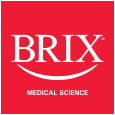Reasons for using papain for caries removal
Since the chemo-mechanical caries removal method was introduced in 1975, numerous studies have been conducted to perfect this technique. The difficulties of using old systems required the acquisition of specific tools, which increased their market value preventing their applications in a massive scale, making chemo- mechanical caries removal into a privilege for the few.
In an attempt to globalize the use of this technique by promoting its use mainly in the field of public health, in mid-2002 several research works and trials began using -as active ingredient- an enzyme extracted from papaya peel: papain.
Papain is an endo-protein similar to human pepsin, which is a bactericidal, bacteriostatic and anti-inflammatory agent. Papain comes from the leaves and fruit of mature green papaya, Carica papaya, grown in tropical countries such as Brazil, India, Ceylon, South Africa and Hawaii.
In comparison to other natural enzymes, papain has some advantages such as enzymatic activity and quality; stability in adverse conditions of temperature, humidity and atmospheric pressure; it is found in high concentrations in the latex extracted from the peel of papaya, and has a high commercial value due to the diversity of possible uses.
Papain acts only in the lesioned tissue because of the absence of a plasma antiprotease, the α1-anti-trypsin, which prevents its proteolytic action in tissues considered normal. The α1-anti-trypsin inhibits protein digestion. When applied, papain will contribute to the degradation and elimination of the fibrin “mantle” formed by the carious process.
Having achieved an exclusive E.B.E. (Encapsulating Buffer Emulsion) technology worldwide, Brix Medical Science has succeeded in creating and developing a unique product in the world. Being bio-encapsulated, papain enzyme has highly positive effects and results never seen before x and / or chemical-mechanical removal techniques.

